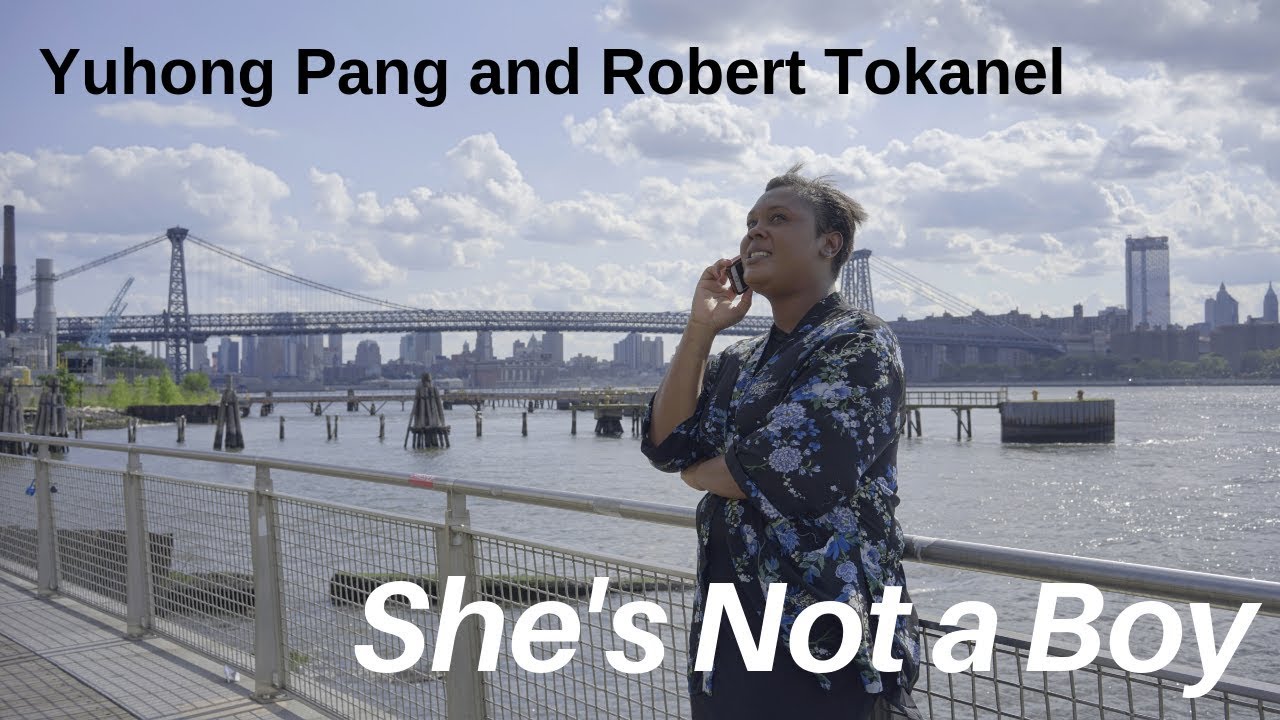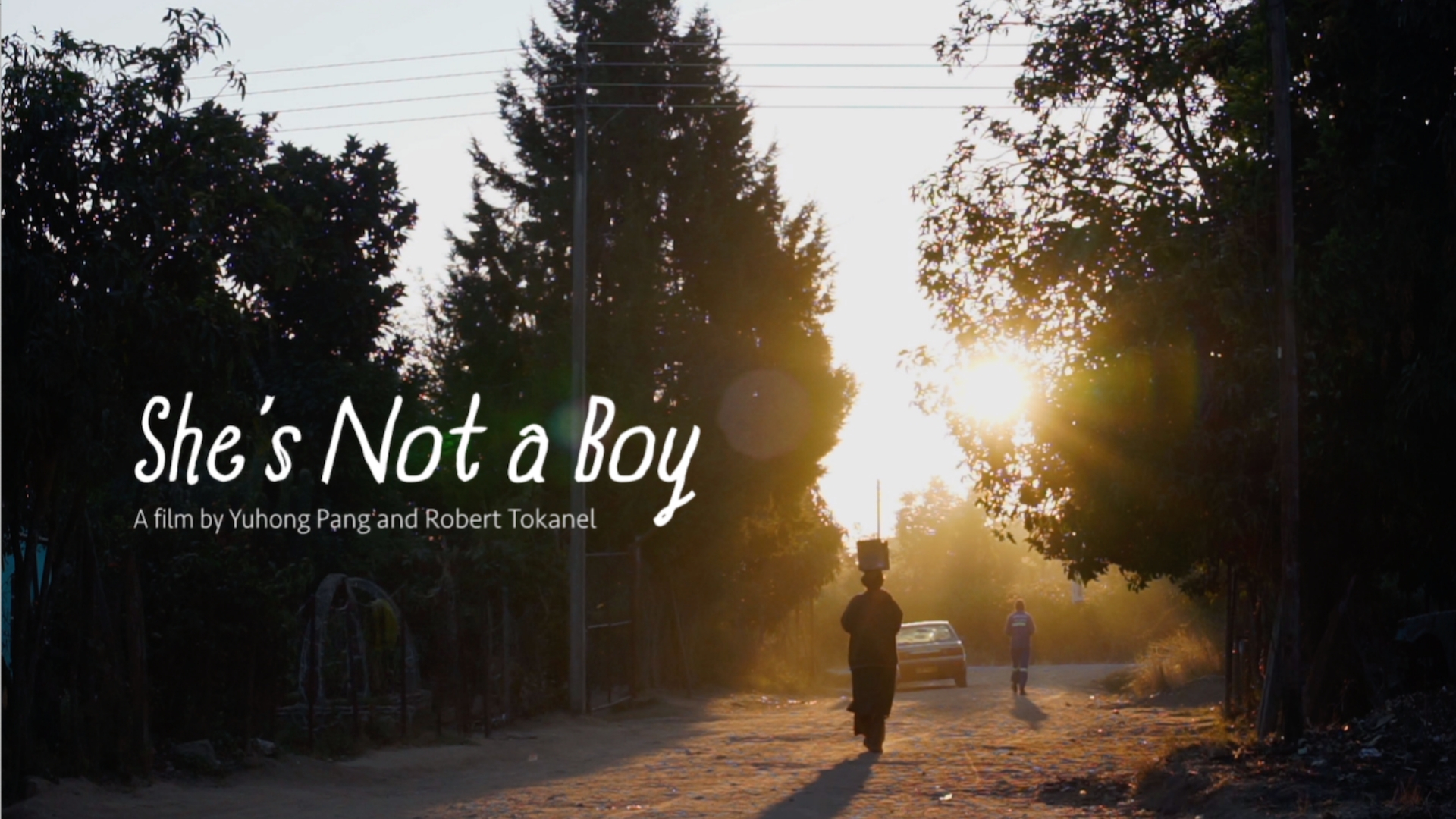
Yuhong Pang and Robert Tokanel are 2019 Columbia University School of Journalism student fellows. Their film, She's Not a Boy, was produced in part with support from the Pulitzer Center.
“It was like a bomb being dropped into our life.”
That’s Isaiah Ngwaru. He’s talking about the moment he and his wife, Betina, discovered that their child, Tatenda, was intersex. Although she had been raised as a boy, Tatenda had railed against the strict masculine norms in her hometown of Gutu, Zimbabwe. She wore high heels, dressed in skirts, and expressed a desire to change her gender. It wasn’t until Tatenda underwent an operation for a hernia, however, that her condition became medically salient to her parents—the surgeon found “something like an ovary” in the child’s body.
“I just knew it. I felt it in my gut. I’m a girl,” Tatenda says in the short documentary She’s Not a Boy, premiering on The Atlantic today. “There’s no explanation more than that.” Robert Tokanel and Yuhong Pang’s film is a poignant and ultimately inspiring window into the life of an intersex individual. Like many intersex people, Tatenda struggles to assert herself in a world that is largely ignorant of, and often discriminatory toward, her identity.
Intersex is an umbrella term that describes a variety of conditions in which a person is born with sex characteristics that don’t conform to binary definitions of female or male. According to the United Nations, up to 1.7 percent of babies are born intersex—a figure that is roughly equivalent to the probability of being born a redhead.
“I was confused when I first saw the word intersex, so I went online to look it up,” Pang told me. “The more I learned about Tatenda and her backstory, the stronger I felt I wanted to make a film about it. Her courage and resilience in embracing her true identity and living with it in pride every day can really empower other intersex people who are facing similar situations.”
In the film, Tatenda’s father says he wishes that Zimbabwean society, which is extremely conservative on gender and sexuality matters, would understand “the nature of Tatenda.” But it’s not just Zimbabwe—in the United States, a lack of education about intersex conditions has caused a pervasive morass and stigma.
Pang says people often confuse the concepts of transgender and intersex. “Usually the first assumption people may have after learning that a person raised a boy grew up to be a woman is that they are transgender, but the reality is sometimes more complicated than that,” she told me. For example, many intersex individuals, such as Tatenda, are assigned a gender at birth due to their external genitalia. Only later in life do they learn that they have different internal sex organs or hormones, or a combination of male and female chromosomes (such as XXY). Some people live their whole life without ever discovering they’re intersex.
In many countries, including the United States, doctors recommend gender-assignment surgery for babies born with ambiguous genitalia. Many believe that these surgical interventions are driven by a fear of nonbinary bodies. “Corrective surgeries are medically unnecessary and can be physically and psychologically devastating,” Tokanel said. “The parents of children born intersex are often confused and frightened by the diagnosis and think they’re making the best decision for their child, but they’re totally unaware of the potential irreversible harm they’re causing because a doctor who is in a position of authority has told them to act quickly to avoid the stigma of being ‘different.’”
Many intersex people find that the stigma extends into the LGBTQ community. In one scene in She’s Not a Boy, Tatenda explains how she feels uncomfortable joining the Pride parade in New York City. “The queer community does a poor job of holding space and creating awareness and identity safety for intersex people,” Tokanel said. “Given that reality, many intersex people aren’t living publicly … Tatenda is a rare and brave example of a person who is willing.”
Tokanel and Pang found Tatenda’s story to be particularly resonant because of her supportive and loving relationship with her parents. “Despite all the discrimination against their daughter, Tatenda’s parents, Betina and Isaiah, were among the first few people that fully accepted her and even defended her in their community,” Pang said.
On the last day of filming in Gutu, Tatenda’s mother invited Tokanel and Pang to attend church services with the family. “She told us that bringing us to their church would be one of their proudest moments, because it would show people that Tatenda had made it through hard times and that people wanted to learn more about her because she was so special,” Tokanel said. “Everyone deserves that kind of familial love, but queer people don’t always manage to form those kinds of bonds with their parents.”
The film ends with a strong declaration from Tatenda. “I am a black woman, an immigrant, and an intersex woman,” she says. “That is something that is built automatically to destroy me. But from that, I rise.”










